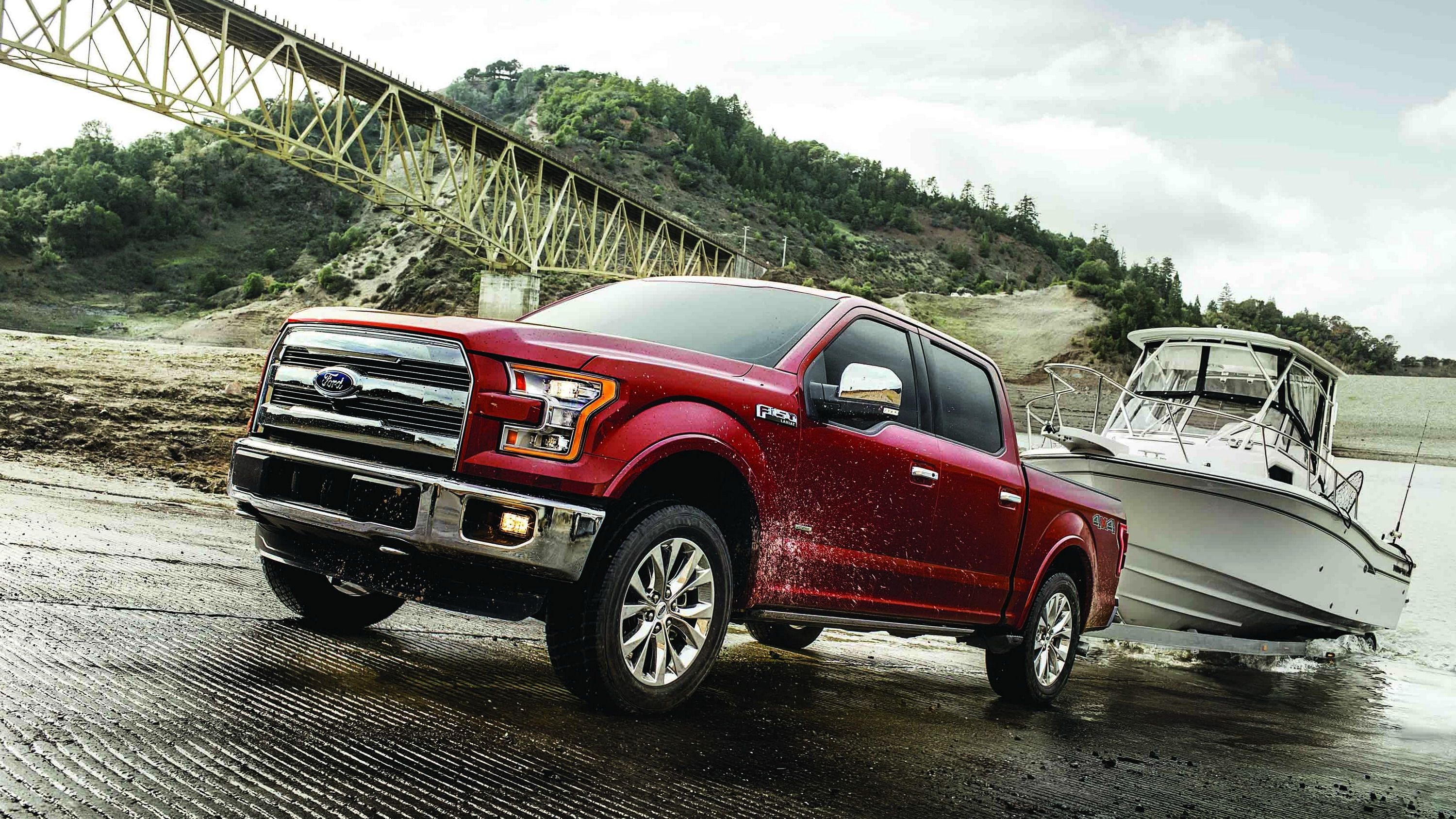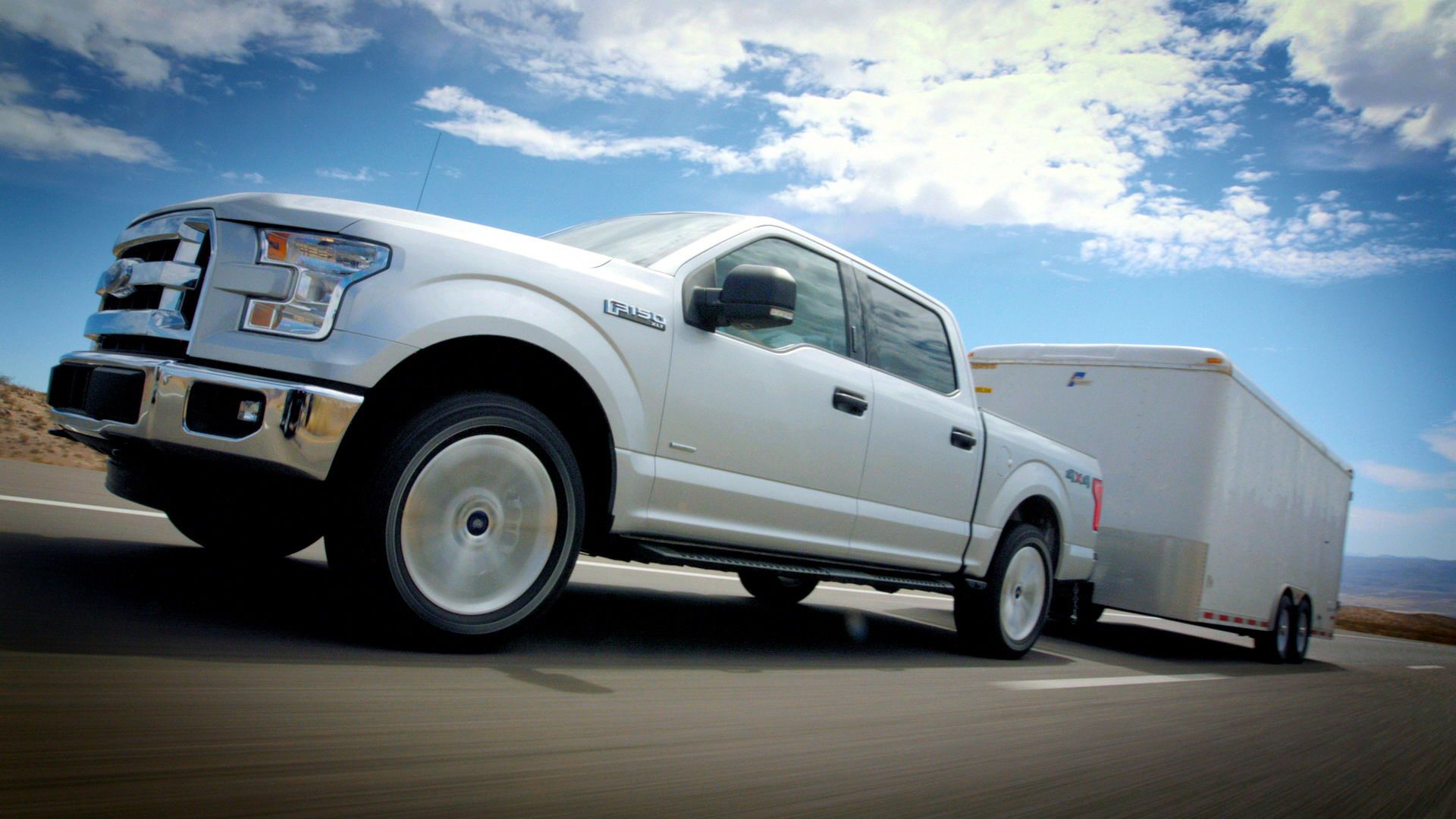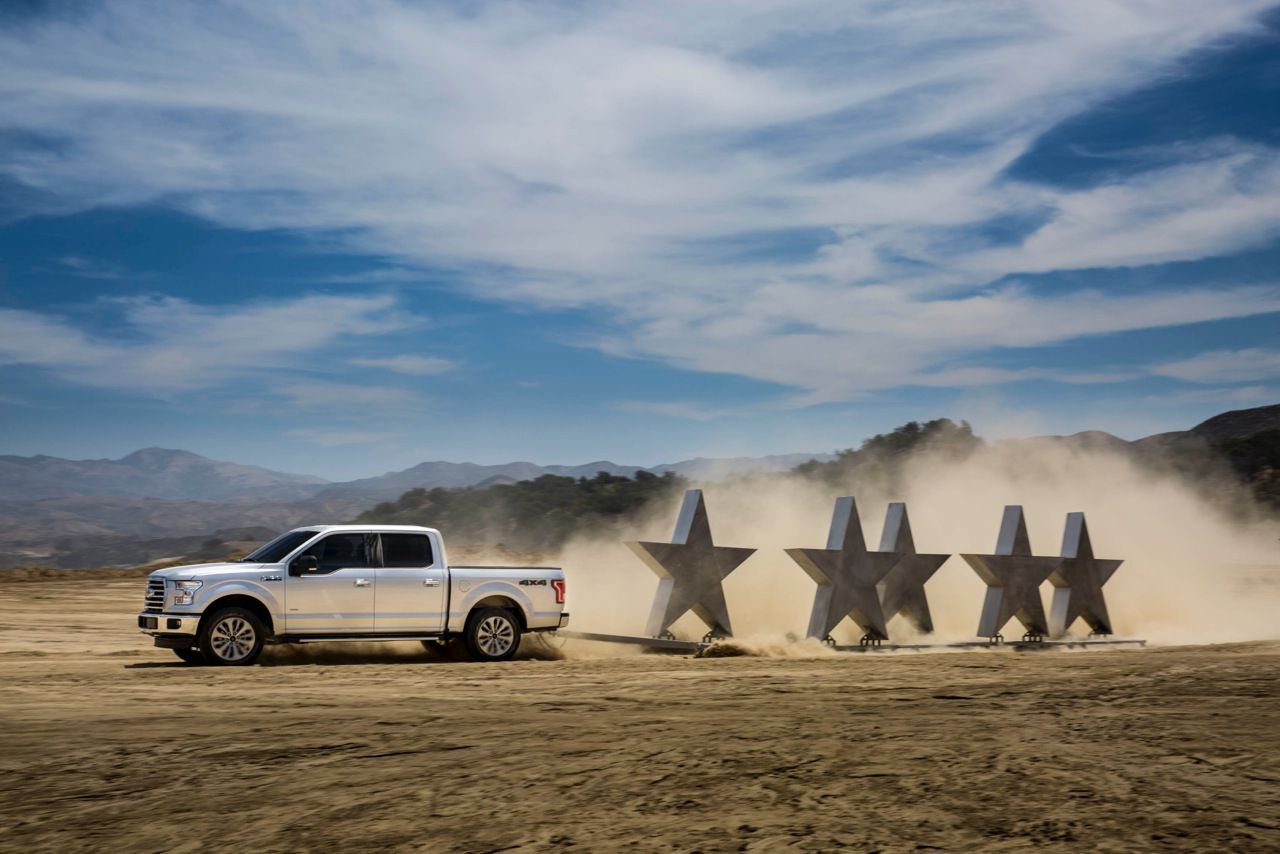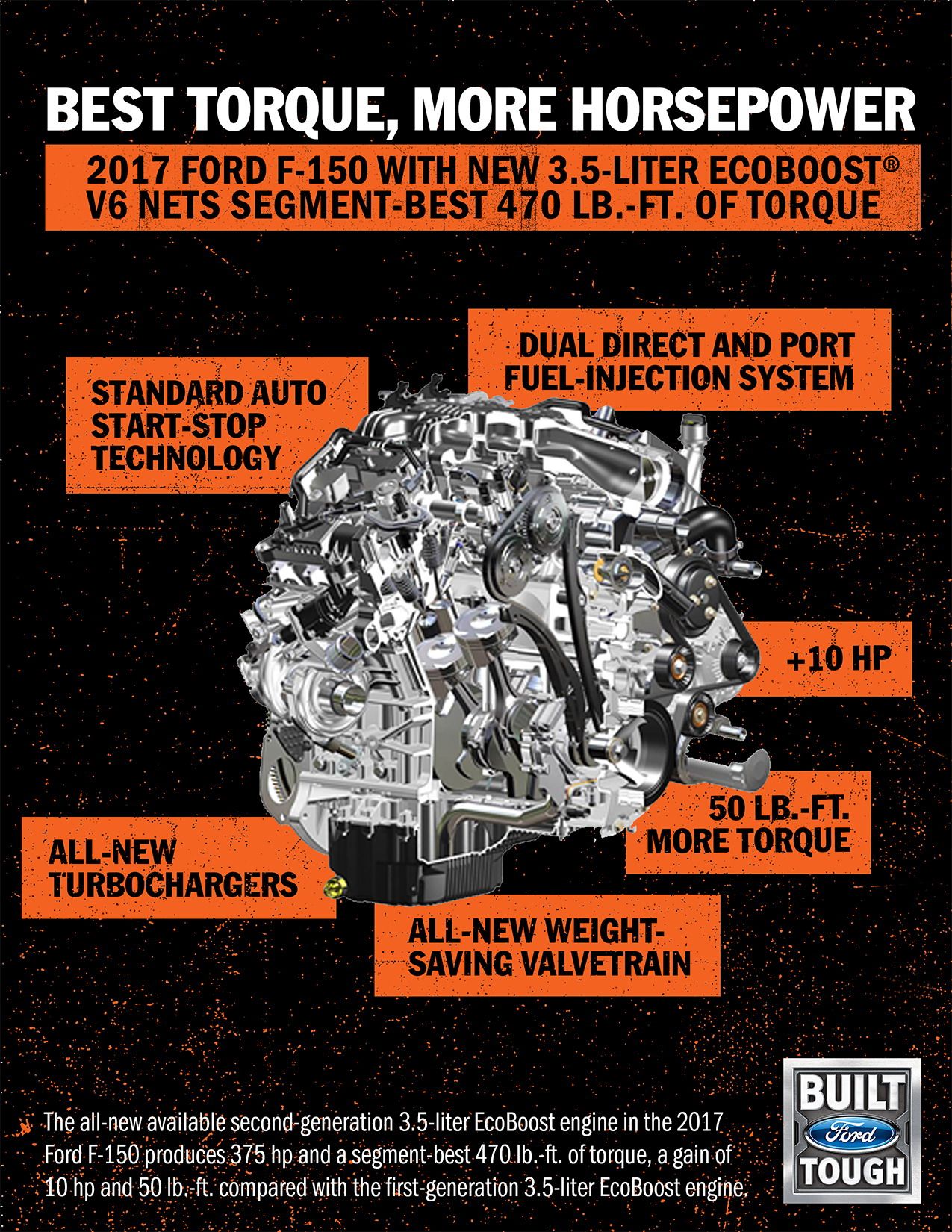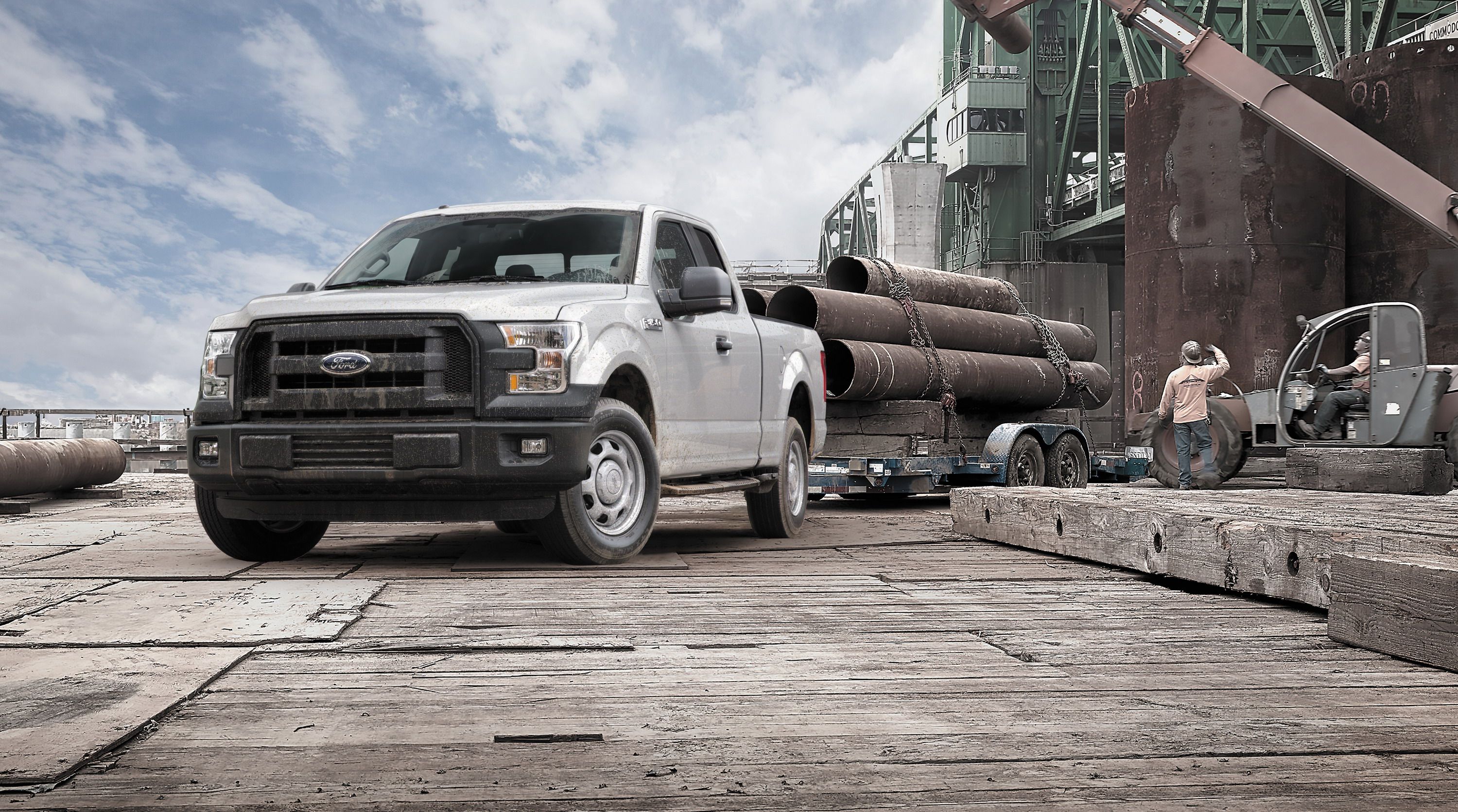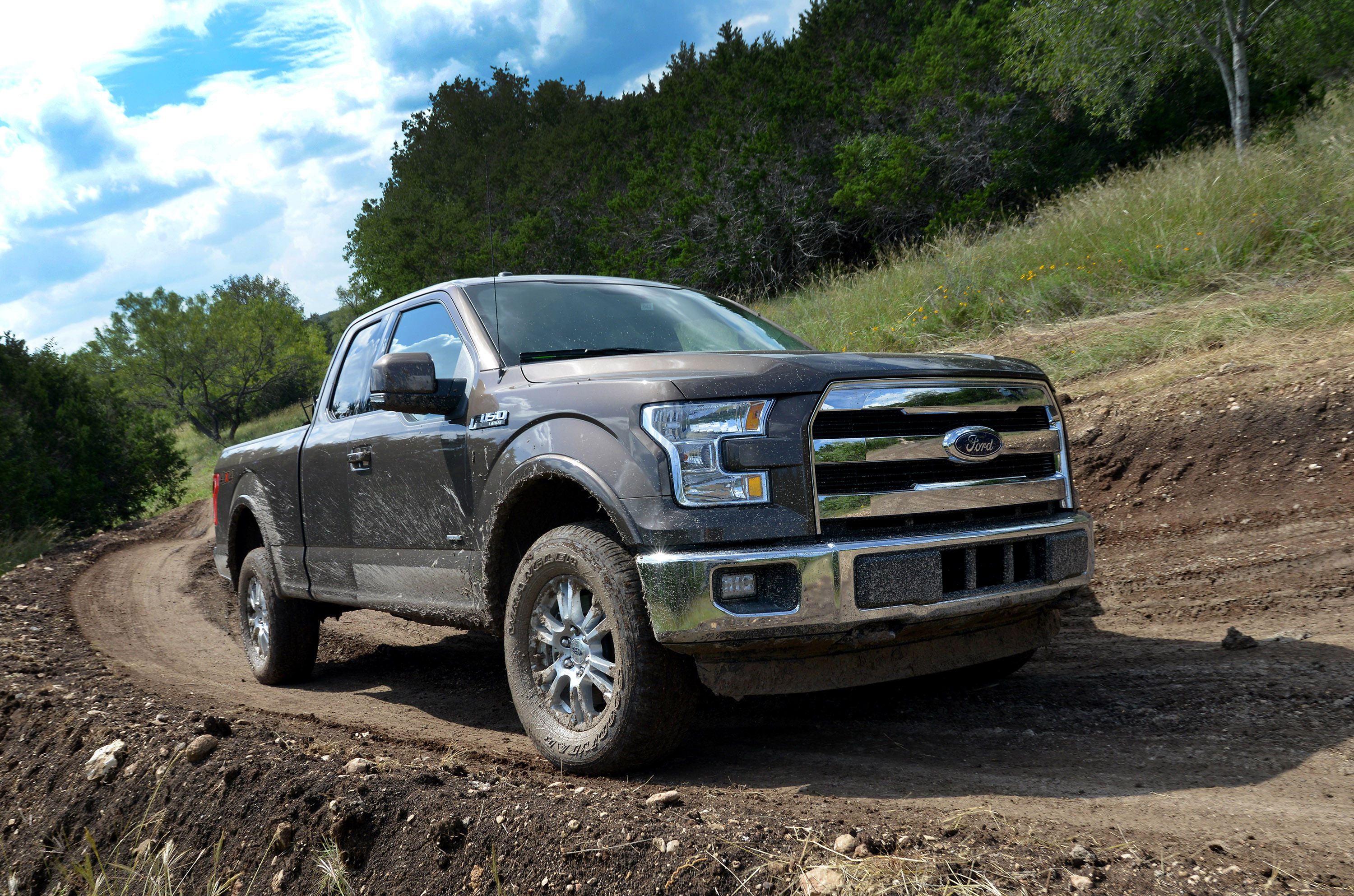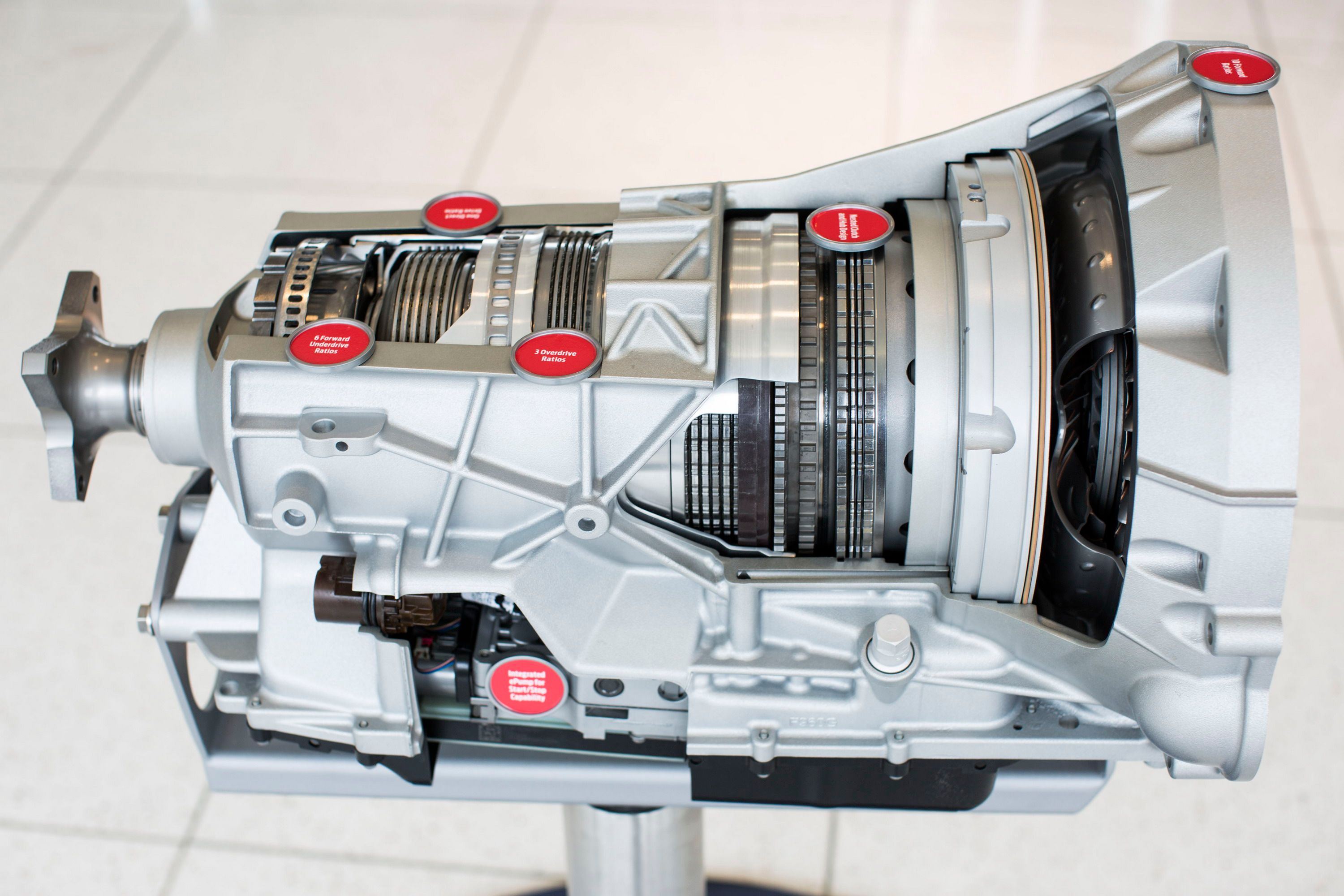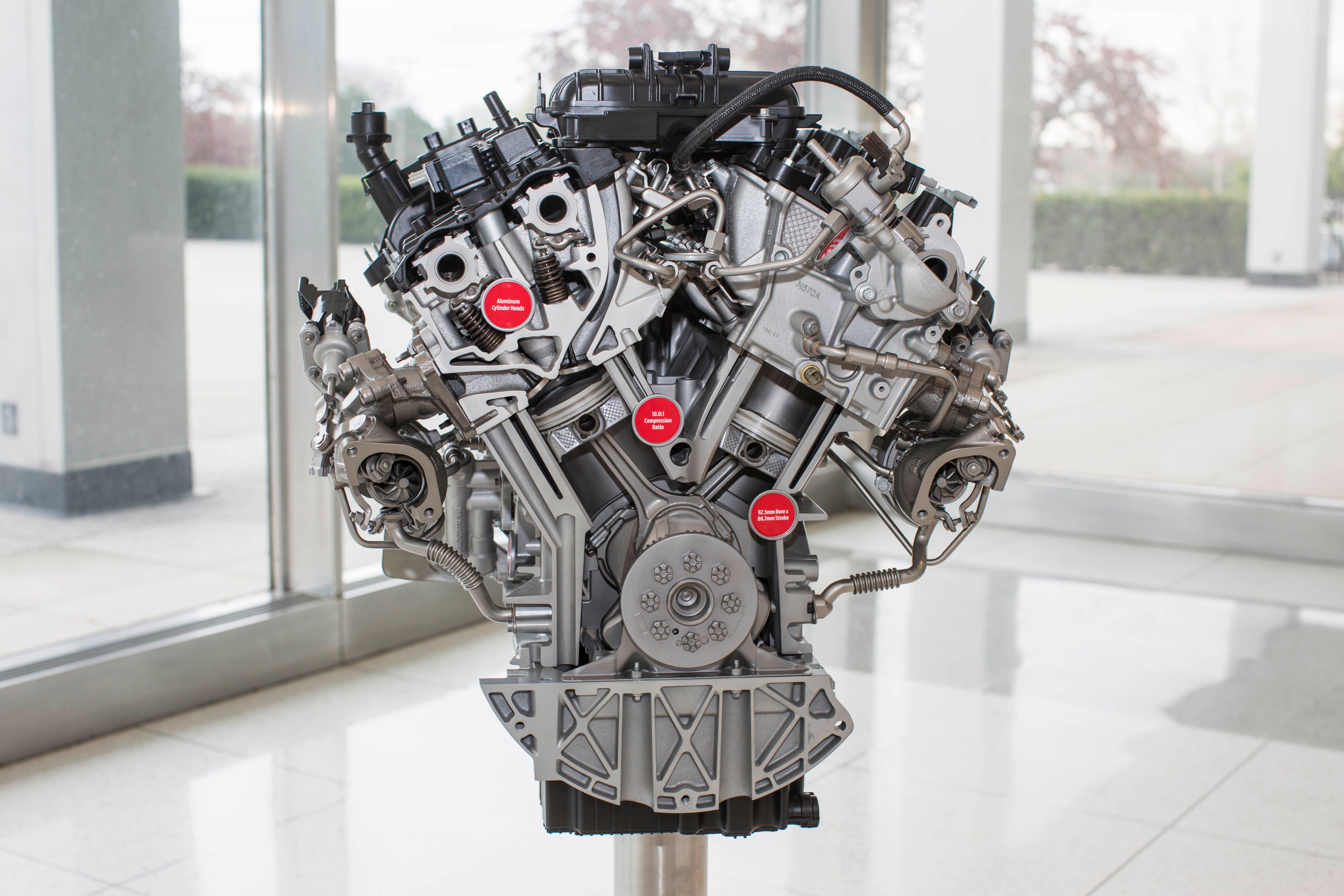Ford is working to keep the F-150 ahead of its competition with powertrain updates for the 2017 model year. The venerable 3.5-liter EcoBoost V-6 is moving into its second generation with more power and torque, while an all-new 10-speed automatic transmission helps boost fuel economy and performance. These changes come only two model years after Ford completely reworked the F-150 for 2015. We expect Ford to have more widespread changes ready for the 2018 model year, including updated looks inside and out.
This latest news is all about the powertrain, though. The EcoBoost engine family has been a hot seller for Ford, powering roughly 60 percent of new F-150s. Along with the 3.5-liter V-6, Ford’s 2.7-liter EcoBoost V-6 helps meet the majority of customers’ needs without the added cost of reduced fuel economy from the typical V-8. The smaller EcoBoost delivers impressive power similar to a V-8 just a few years ago.
Raj Nair, Ford executive vice president, Product Development, and chief technical officer says, “The 2017 Ford F-150 now delivers the best torque in the segment. This class-leading torque arrives with a transformative 10-speed automatic that improves nearly every aspect of F-150 performance.”
So what are these changes and how do they affect performance? Keep reading to find out.
Continue reading to learn more about the 2017 Ford F-150.
2017 Ford F-150
- Make: Array
- Model: 2017 Ford F-150
- Engine/Motor: V6
- Horsepower: 375
- Torque: 470
- Transmission: 10-speed automatic
- [do not use] Vehicle Model: Array
Exterior
Ford isn’t changing anything on the outside for 2017. That means the F-150’s design will move into its third year. Still, its appearance continues to be fresh and inviting. Cab sizes and bed lengths remain unchanged, as do wheel choices. We’ve got a full run-down of the F-150’s exterior here.
Interior
The interior remains unchanged as well. That’s not surprising considering the pickup is still relatively new. The design and materials rank high among its competitors thanks to its thoughtful features and long list of convenience options. Trim levels are numerous, allowing customers to spec a base XL work truck up to a luxo-lined Platinum model with massaging front seats.
Drivetrain
It’s under the hood where 2017’s changes are found. Ford’s efforts concentrate on the 3.5-liter EcoBoost V-6 – one of four engine choices in the F-150. Likewise, the new 10-speed automatic replaces the six-speed automatic.
The EcoBoost moves into its second generation with 50 more pound-feet of torque and 10 more horsepower than before. That’s thanks to having both direct and port fuel injection, all-new turbochargers, and a completely new valvetrain system that’s also said to cut weight. The result is 375 horsepower and 470 pound-feet of torque. Ford also added a Stop/Start system as standard equipment to help curb fuel consumption while idling in drive.
That torque rating is class leading – not just among V-6 engines, but among every V-8 and turbodiesel engine option available in today’s half-ton pickups. It even eclipses GM’s 6.2-liter V-8, whose torque rating is 460 pound-feet. GM’s big V-8 still holds the title of most horsepower, with 420 horses on tap.
This new 3.5-liter EcoBoost will also come in a high-output variant, as well, that’s slotted to power the 2017 F-150 Raptor. Ford has yet to release horsepower and torque specs for that engine, but we know it will produce at least 412 horsepower and 450 pound-feet of torque. Now, we know this because of two separate announcements by Ford. The automaker says the Raptor’s EcoBoost will make more horsepower and torque than the outgoing Raptor’s 6.2-liter V-8. Ford also has said the Raptor’s EcoBoost will make “at least 450 pound-feet.” We’d bet very strongly, however, that torque estimate is very conservative, especially considering the standard-output EcoBoost makes 470 pound-feet. We’d expect the Raptor to have at least 480 pound-feet.
And speaking of GM, the new 10-speed automatic transmission in the 2017 F-150 is a joint venture between Ford and GM. The F-150 will debut the gearbox for Ford, while the 2017 Chevrolet Camaro ZL1 will debut the gearbox for GM. Tuning and calibration will differ between the brands and models, of course, allowing each automaker to dial in the performance desired for each vehicle application. Don’t expect the Camaro ZL1 to offer Tow/Haul mode, for example. Likewise, the F-150 probably won’t come with launch control.
The 10-speed auto will only be available with the 3.5-liter EcoBoost for 2017, but we expect Ford to make it standard equipment in the F-150 for 2018.
The 2017 EcoBoost engine and 10-speed automatic transmission combination will definitely be a welcomed addition to the truck – one we’re anxiously looking forward to testing.
Prices
Ford has not made any announcement regarding a price increase for the 2017 F-150. Still, we’d bet Ford will pass development costs onto the consumer. This means we can expect a larger premium in selecting the 3.5-liter EcoBoost engine option. MSRP wise, the F-150 will continue to range wildly in price depending on trim line and ordered options. Prices for a 3.5-liter EcoBoost-equipped F-150 will start around $30,000 and shoot into the lower $60,000 range.
Competition
Chevrolet Silverado
The Silverado’s current generation debuted for the 2014 model year and has been a large success for GM since. A moderate front-end redesign brought new looks for 2016, but otherwise, the truck continues unchanged. Mechanically, an eight-speed automatic transmission continues to spread downward into the trim ranges. Engine wise, the Silverado continues with its EcoTec3 family. This lineup includes the 4.3-liter V-6, the 5.3-liter V-8, and the 6.2-liter V-6. All three use variable valve timing, active fuel management (cylinder deactivation), and direct injection.
Prices start around $26,000 for a base Silverado. A high-end Silverado in High Country trim, with options, can crest near $60,000.
Read our full review on the Chevrolet Silverado here.
Ram 1500
Ram usually trails Ford and Chevy in terms of sales numbers, but the truck builder has a slew of innovations it uses to attract buyers. It offers a multi-link, coil spring rear suspension with an optional four-corner air ride suspension. There’s the optional RamBox system for the cargo bed, and of course, the 3.0-liter EcoDiesel. Ram is the only to offer a turbodiesel in the half-ton segment, making it attractive for customers wanting good fuel economy with plenty of truck-like power. The EcoDiesel kicks out 240 horses and a respectable 420 pound-feet of torque.
Prices for the Ram are similar to the Ford and Chevy, but a premium is required for the EcoDiesel. The base price for Ram 1500 is around $26,000. Opting for the diesel pushes the price slightly over the $30,000 mark.
Read our full review on the Ram 1500 here.
Conclusion
The 2017 F-150’s powertrain updates will help it win the numbers game. You know, the perpetual ego-measuring competition that goes on between the truck makers. Ford will proclaim things like “class leading” and “most powerful” in hopes of attracting customers – all thanks to the new EcoBoost. Still, there are plenty of customers out there that actually benefit from the newfound power and efficiency in the second-gen EcoBoost.
These are good times in the auto industry. We’re seeing horsepower and torque increase while fuel economy continues to slowly rise – all in an effort to win customers while meeting government CAFÉ standards. Truthfully, it’s a win-win situation. We look forward to seeing finalized numbers on fuel economy, payload capacities, and tow ratings for the updated F-150.

